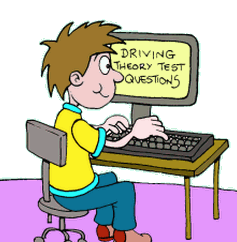Before Learning to Drive
The minimum age at which you are allowed to learn to drive a car on public roads is 17. As you probably know, you are not allowed to drive legally on your own until you pass your test. This means whilst learning to drive you will always be accompanied by a qualified driver, and that person must be over 21 and have a full British driving licence that they must have held for three years or more.
You will probably learn to drive in a dual control car with a qualified instructor, this means that the car is set up especially for learner drivers and so that if it is required the instructor can press their own set of brakes to slow the car down for instance.
You must first have a provisional driving licence before you are allowed to learn to drive. There is an application form available for this and you can apply online from the DirectGov website.
There is a minimum standard for eyesight for drivers, and so you should ensure that your eyes are up to the level. If you wear glasses or similar then of course you must ensure that you wear them whilst you are driving.
There are also rules about the vehicle that you are going to drive: it must be taxed and the tax disc must be clearly displayed on the windscreen (nearside corner). Also it must be insured for you to be able to drive and learn to drive in that particular vehicle. Should the vehicle be three years old or more then you will need to ensure that it has an MOT cetificate and finally there must be fixed L-plates on the front and rear so that other drivers are alerted to the fact that the car contains a learner driver (you!)
Related Articles...
Various road markings you might find
Many drivers who are good at interpreting and understanding what a large range of road signs mean are not so good when it comes to road markings.
Some drivers appear to not even really be...
When to use hazard warning lamps
Hazard warning lamps, are by their nature, lamps that you should not use routinely. However it is important to know when is the correct time to use them, and how to switch them on.
They are...
Understanding illuminated signals on motorways
The location of the signs and signals that you see on motorway itself tells you some information: who it applies to.
Signs at the edge of the road will apply to all drivers, whilst those that...
Tips on joining a motorway
Joining and leaving the motorway are generally considered the more tricky elements of the journey. When it comes to leaving the motorway, it is all about selecting the right exit and moving over to...
More on Motorway Driving
Signs that let you know there is a motorway ahead are rectangular, and they have a green background. This shows that they are information signs on a primary road.
The part with the reference...
Using head restraints
Your car will have head restraints in it, but do you take the time to adjust these before using the vehicle and ensuring they are set at the correct level for you? Head restraints in vehicles are...
Staying calm in your driving test
There is no doubt that many people get extremely nervous before the driving practical test, and whilst this can be frustrating or disconcerting, it is not necessarily a bad thing. Many people...
Skidding: what to do if you skid
No-one wants to skid, because skidding is a hazard that can lead to potential damage for you and other road users; in other words it is a dangerous situation to be in.
However sometimes it...
What to check on your car daily
A car is a sophisticated piece of machinery, although it is commonplace and therefore taken for granted by many there are considerable elements working together to make it work.
And if one...
Tips on passing your theory test
It is up to each individual who takes a theory test to do the necessary work and preparation to put themselves in the best position to pass the test.
Rather than attempting to 'cram' the night...
Back to home page of driving theory test questions

